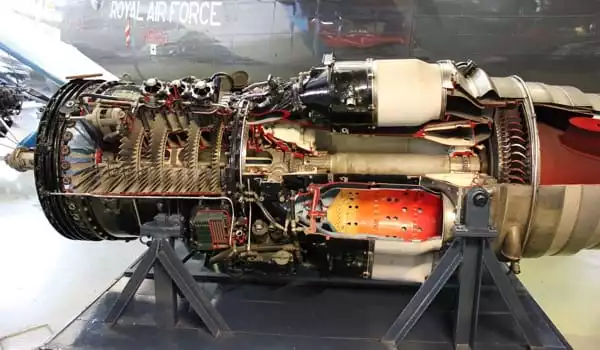Molten particle deposition on the interior surface of jet engines can cause significant damage and degrade engine performance. Scientists have now successfully simulated the solidification of a molten droplet as it collides with a cooler flat surface. This method employs a mesh-free method to accurately predict droplet spread and solidification, and it has the potential to improve turbine efficiency in the future.
Gas turbine engines in planes generate thrust by sucking in air, heating it to extremely high temperatures in a combustion chamber, and then exhausting it at high speeds. Small inorganic particles, such as volcanic ash, are sucked in with the air as they operate. These particles melt in the combustion chamber’s high-temperature zones and solidify on the engine’s cooler zones, such as the turbine blades. These droplets solidify and accumulate on the surface of the gas turbine over time, deforming the blades and blocking cooling holes, reducing engine performance and life.
While the deposition phenomenon cannot be avoided, engineers can develop and modify engine designs by predicting the process. One of the most important aspects of the deposition process is determining how molten droplets solidify when they come into contact with a cooler surface, and an accurate simulation of this process is critical to understanding the process.
We had been simulating droplet impact, but we couldn’t ignore the experimental difference. We reasoned that taking into account the temperature change of the colliding wall surface would be consistent with the experiment in this study.
Dr. Fukudome
A group of Japanese scientists developed a model that can quickly and accurately simulate the solidification of a single molten droplet on a flat surface in a study published in the International Journal of Heat and Mass Transfer. Their model requires no prior knowledge to set up and can be used to create models that predict the deposition process in jet engines.
Dr. Koji Fukudome and Prof. Makoto Yamamoto from Tokyo University of Science, Dr. Ken Yamamoto from Osaka University, and Dr. Hiroya Mamori from The University of Electro-Communications made up the research term.
Unlike previous models, which assumed a constant surface temperature, the new approach simulates the solidification process by taking into account droplet behavior and heat transfer between the hotter droplet and the cooler surface. “We had been simulating droplet impact, but we couldn’t ignore the experimental difference. We reasoned that taking into account the temperature change of the colliding wall surface would be consistent with the experiment in this study” Dr. Fukudome explains.

The researchers chose a mesh-less moving particle semi-implicit (MPS) method that did not require multiple calculations on each grid to create a less computationally intensive model. The MPS method has been widely used to simulate complex flows because it is based on fundamental equations of fluid flow (such as the incompressible Navier-Stokes equations and mass balance conservation equations). Meanwhile, the temperature change inside the substrate was computed using the grid-based method, so we combined the particle-based and grid-based methods.
The researchers used this method to simulate the solidification of a molten tin droplet on a stainless steel substrate. The model performed reasonably well, replicating the solidification process observed in experiments. The simulations also provided a detailed look at the solidification process, emphasizing the spreading behavior and temperature distribution of the droplet as it comes into contact with the solid surface.
Their simulations revealed that the thickness of the liquid film formed after the molten droplet made contact with the surface influences solidification. Solidification begins as the liquid film expands on the surface and was first observed near the surface of the liquid film. Solidification progresses as the liquid film spreads and becomes thinner until the entire film is transformed into solid particles.
These findings are an improvement over current solidification models, and the team is optimistic that their current approach can be used to build more complex deposition models. “There is no single model that can predict depositions. As a result, when considering the deposition of a specific droplet, a model is created by conducting preliminary experiments, and numerical predictions are made. This research is expected to pave the way for the development of a universal deposition model” Dr. Fukudome makes a comment.





